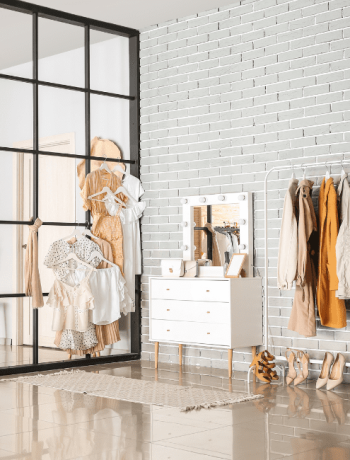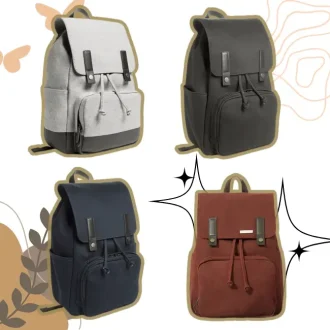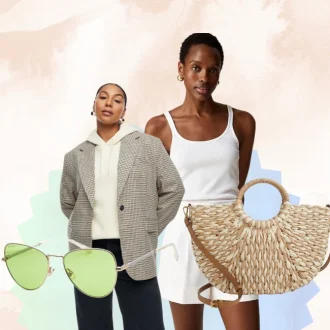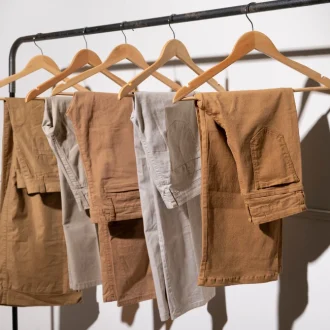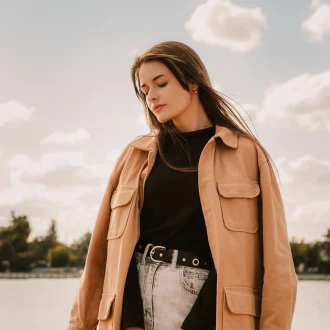- IN THIS ARTICLE
Minimalist fashion, much like the minimalist backpack, is an increasingly popular trend that offers a refreshing and sophisticated alternative to the excess waste of fast fashion.
Embracing a minimalist approach to clothing not only simplifies your wardrobe but also promotes sustainability and allows you to create versatile, timeless outfits for various occasions, contributing to a more conscious wardrobe.
While minimalist fashion focuses on simplicity and functionality, its counterpart, maximalist fashion, embraces boldness and abundance in style, offering a different perspective on personal expression through clothing.
In this article, we’ll explore essential minimalist fashion pieces, styling tips, color coordination, and practical advice for decluttering and maintaining a minimalist capsule wardrobe.
For those intrigued by the vibrant and expressive nature of maximalist fashion, our article ‘Minimalist vs. Maximalist Fashion: Everything You Need to Know‘ delves into the fascinating contrasts and complements between these two distinct styles.
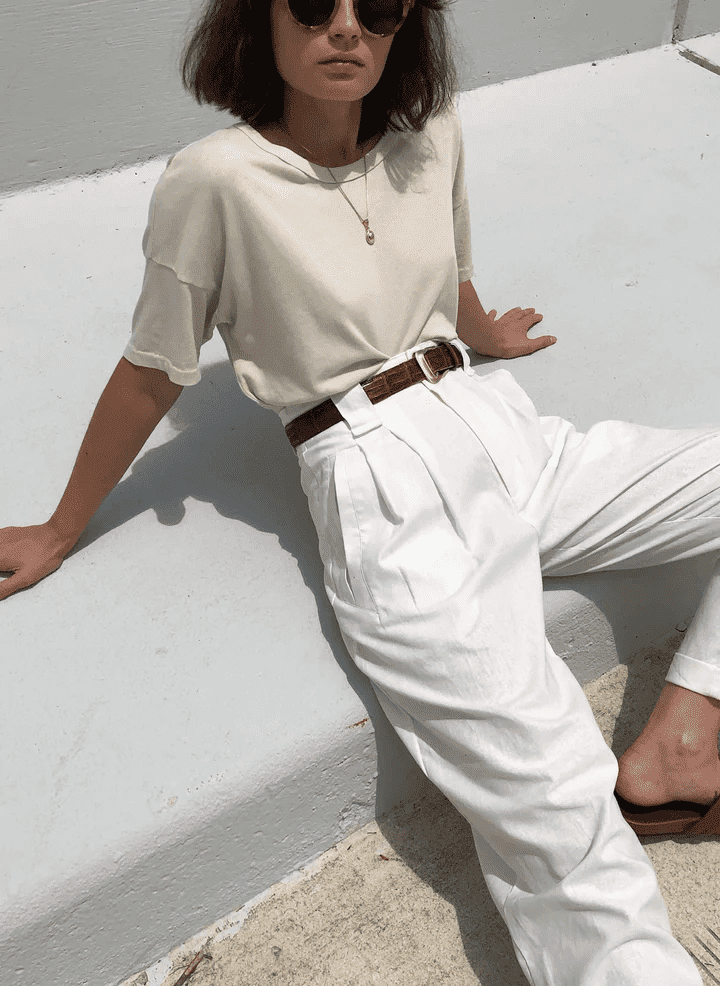
Minimalist fashion focuses on simplicity, functionality, and versatility. In this section, we’ll explore the key elements and principles of minimalist style.
Key Elements
- Simplicity: Clean lines, basic shapes, and no complicated patterns or embellishments.
- Neutrality: Neutral colors for easy mix-and-match and wardrobe cohesion.
- Functionality: Comfortable, versatile, and easy-to-care-for clothing items.
- Quality over quantity: Invest in fewer, high-quality pieces for durability.
- Timelessness: Prioritize classic, lasting items over short-lived trends. This approach creates timeless wardrobe essentials that endure beyond seasonal changes.
Principles of Minimal Aesthetic Outfits
Less is more: Focus on impactful, versatile pieces for various looks.
Coordination: Ensure wardrobe pieces coordinate for a cohesive look.
Balance: Mix textures, shapes, and proportions for balanced outfits.
Focus on details: Elevate outfits with fit, tailoring, and fabric choices.
For a deeper dive into transitioning between seasons while maintaining a minimalist aesthetic, check out our comprehensive guide on Seasonal Minimalist Wardrobe Transition.
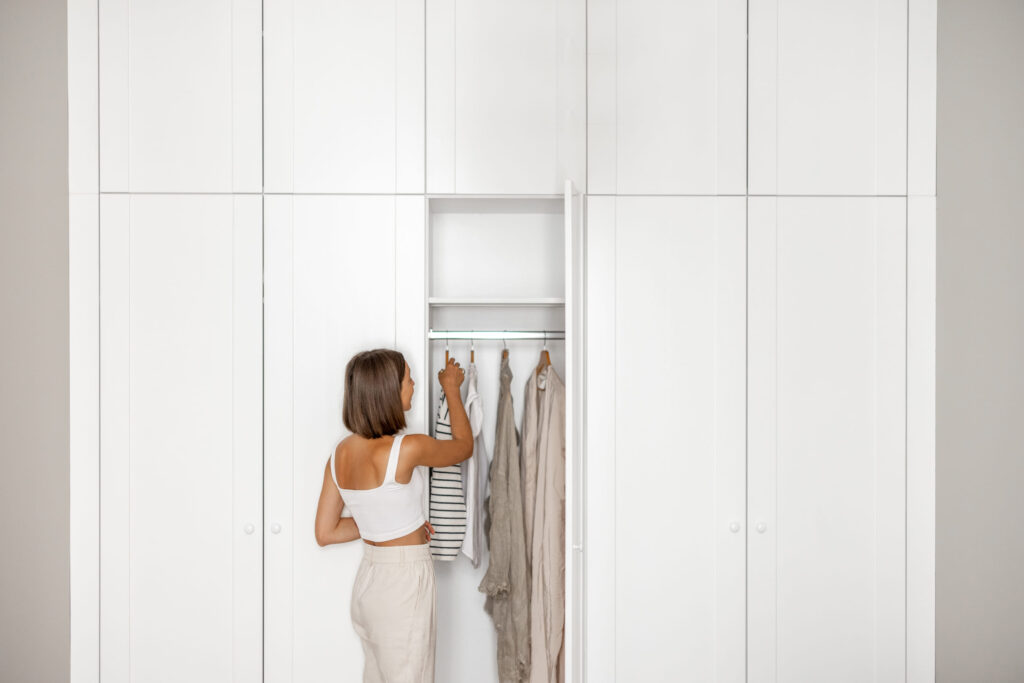
Creating a minimalist wardrobe involves determining your personal style and selecting versatile, high-quality essentials clothes that serve as the building blocks of your wardrobe. In this section, we’ll discuss personal style and choosing essential basic clothing items.
Determining Your Personal Style
Assess your current wardrobe: Identify frequently worn pieces and those that make you feel confident.
Create a mood board: Gather inspiration from various sources to visualize your desired aesthetic.
Define style keywords: Use descriptive words representing your style to guide clothing choices.
Consider your lifestyle: Choose clothing items that suit your daily activities, dress code, and climate.
Selecting Essential Minimalist Clothing Items
Basic tops: Invest in versatile tops in neutral colors for easy layering and combining.
A white ribbed tank is an essential item to wear throughout the summer.
Bottoms: Choose classic and versatile trousers, jeans, skirts, and shorts.
Outerwear: Select versatile and fashionable options like trench coats, denim jackets, and blazers.
Dresses and jumpsuits: Include simple, adaptable options for different occasions.
Shoes: Invest in high-quality, comfortable boots and shoes in neutral colors.
Accessories: Complete your wardrobe with simple accessories like belts, scarves, and bags.
Effortlessly Chic
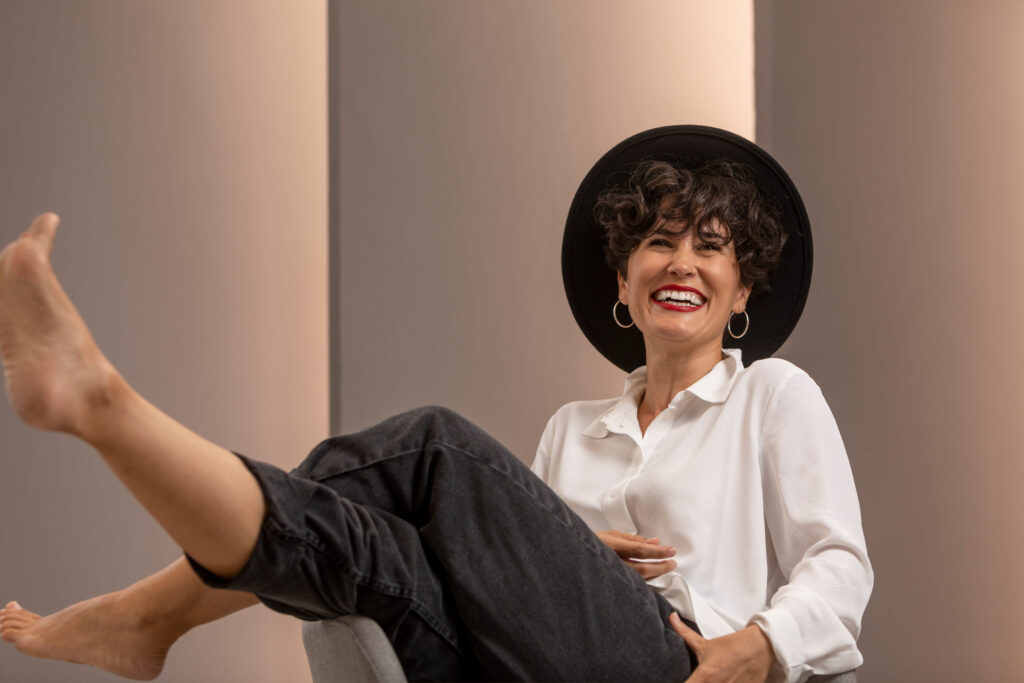
Minimalist fashion is about creating polished looks with essential, high-quality pieces. In this section, we’ll cover minimalist wardrobe basics and styling techniques and share tips for an effortlessly chic look.
Styling Techniques for a Minimalist Wardrobe
Layering: Combine different pieces to create new looks and adapt to changing weather.
Mixing and matching: Experiment with combining items in a cohesive color palette and coordinating textures, patterns, and silhouettes.
Focal points: Choose one standout piece and keep the rest of your look simple.
Accessorizing: Use simple accessories to elevate your outfit without overwhelming the aesthetic.
Style notes: Incorporate versatile pieces that can be dressed up or down. For example, a classic white shirt can be paired with jeans for a casual look or with a blazer for a more polished appearance.
Minimalist Style Tips and Tricks
Invest in quality: Prioritize high-quality, well-constructed pieces.
Tailoring: Ensure your clothes fit well with professional tailoring or alterations.
Stick to a color palette: Develop a complementary color palette for easier mixing and matching.
Care for your clothes: Follow recommended washing and storage instructions.
Embrace versatility: Choose pieces that can transition from day to night or work to weekend, making them perfect for everyday wear.

Sustainable minimalism combines minimalist fashion principles with eco-friendly practices. In this section, we’ll discuss the benefits of sustainable minimalism and ways to incorporate eco-friendly practices into minimalist lifestyle choices.
Benefits of Sustainable Minimalism
Reduced environmental impact: Consuming fewer, high-quality items reduces fashion’s environmental footprint.
Financial savings: Investing in timeless pieces saves money by reducing replacements and impulse purchases.
Simplified wardrobe: Streamlined, versatile wardrobes make selecting easier.
Mindful consumption: Conscious shopping leads to a deeper appreciation for the word clothing and craftsmanship.
Support for ethical practices: Purchasing from ethical brands promotes positive change in the fashion industry.
Eco-friendly Practices
Buy from sustainable brands: Support brands that prioritize eco-friendly materials and ethical production methods.
Opt for second-hand: Purchase pre-loved clothing to reduce waste and extend garment life. Shopping second-hand often comes with the added benefit of cheaper prices while still allowing you to find quality pieces for your simple and elegant wardrobe.
Repair and repurpose: Mend and transform garments to extend their life and utility.
Choose eco-friendly materials: Seek clothing made from sustainable materials like organic cotton, tencel, or recycled fabrics.
Mindful disposal: Donate, sell, or recycle items responsibly to minimize waste and give them a second life.
Seasonal Minimalist Fashion
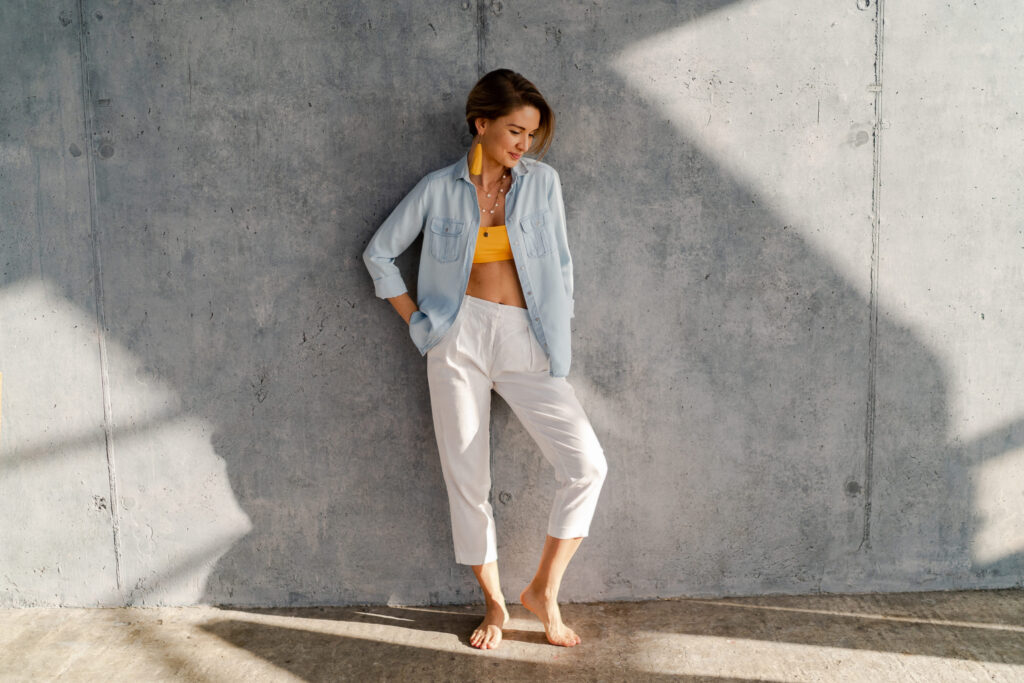
A key aspect of minimalist fashion is its adaptability to different seasons and evolving trends, often highlighted in seasonal collections. With a well-curated wardrobe, you can easily transition your clothing through various weather conditions and stay stylish without compromising your simple and elegant aesthetic or giving in to the temptation of fast fashion.
In this section, we’ll discuss how to transition your wardrobe through the seasons and embrace basic fashion trends while steering clear of fast fashion pitfalls.
Transitioning Your Wardrobe through the Seasons
Layering: Use lightweight layers to adapt to fluctuating temperatures.
Versatile outerwear: Invest in key outerwear pieces for multiple seasons, like a trench coat or denim jacket.
Seasonal color palettes: Incorporate seasonal hues while maintaining a cohesive color palette.
Footwear: Choose versatile boots, shoes, and accessories for different seasons and weather conditions.
Embracing Minimal Fashion Trends
Timeless trends: Focus on timeless trends that integrate easily into your existing wardrobe.
Trendy accessories: Use accessories to add current trends without compromising your overall aesthetic.
Quality over quantity: Prioritize well-made items that will last beyond the current season.
Subtle trend incorporation: Integrate trends subtly by adding small elements to your existing wardrobe.
Minimalist Fashion Icons
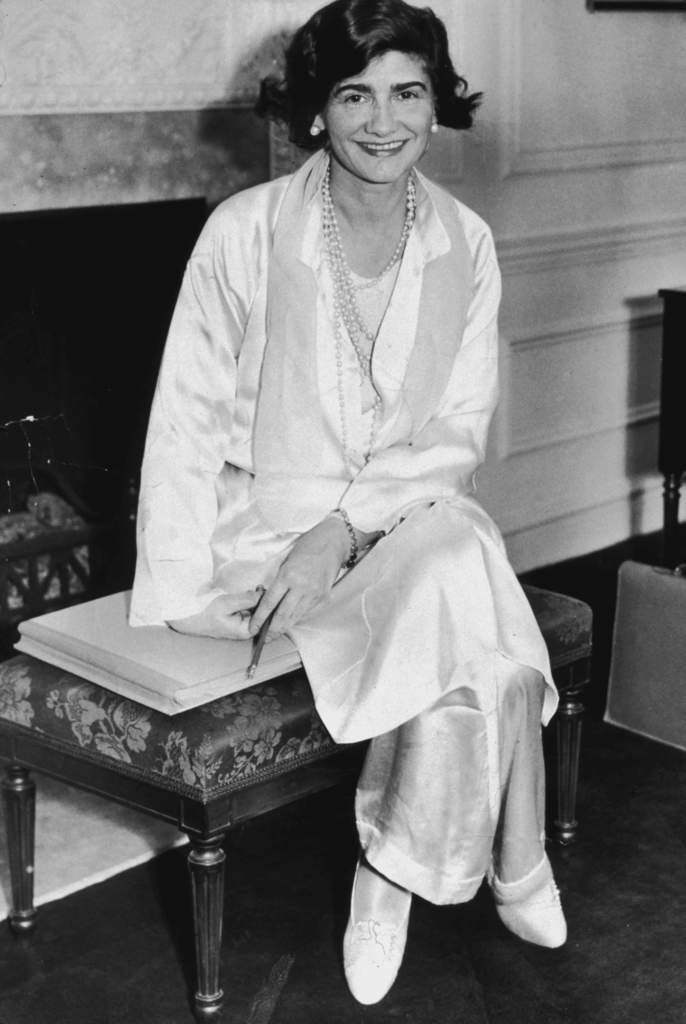
Minimalist fashion has been shaped by various designers and influencers who have embraced the principles of simplicity, functionality, and elegance during fashion week events.
These individuals have left a lasting impact on the fashion world and continue to inspire those seeking to achieve a more pared-down approach to style.
In this section, we’ll explore some influential simple and elegant fashion designers and fashionable understated influencers worth following, who have made their mark at fashion week.
Influential Minimalist Fashion Designers
Coco Chanel: Revolutionized women’s fashion with simple, elegant, and functional designs.
Calvin Klein: Known for clean lines, neutral colors, and sophisticated minimalist designs.
Jil Sander: A key figure in minimalist fashion, featuring sleek silhouettes and high-quality materials.
Phoebe Philo: Renowned for minimalist designs that combine luxury and practicality.
Fashionable Minimalist Influencers to Follow
Caroline Joy Rector (@unfancy): Shares insights on capsule wardrobes and minimalist fashion.
Anuschka Rees (@anuschkarees): Offers valuable advice on creating versatile, functional wardrobes.
Brittany Bathgate (@brittanybathgate): Showcases understated yet chic minimalist fashion.
Signe Hansen (@useless_dk): Creator of Use Less, Signe promotes sustainable minimalist fashion, utilizing eco-friendly practices and recycled materials in her stylish outfits.
Minimalist Accessorizing
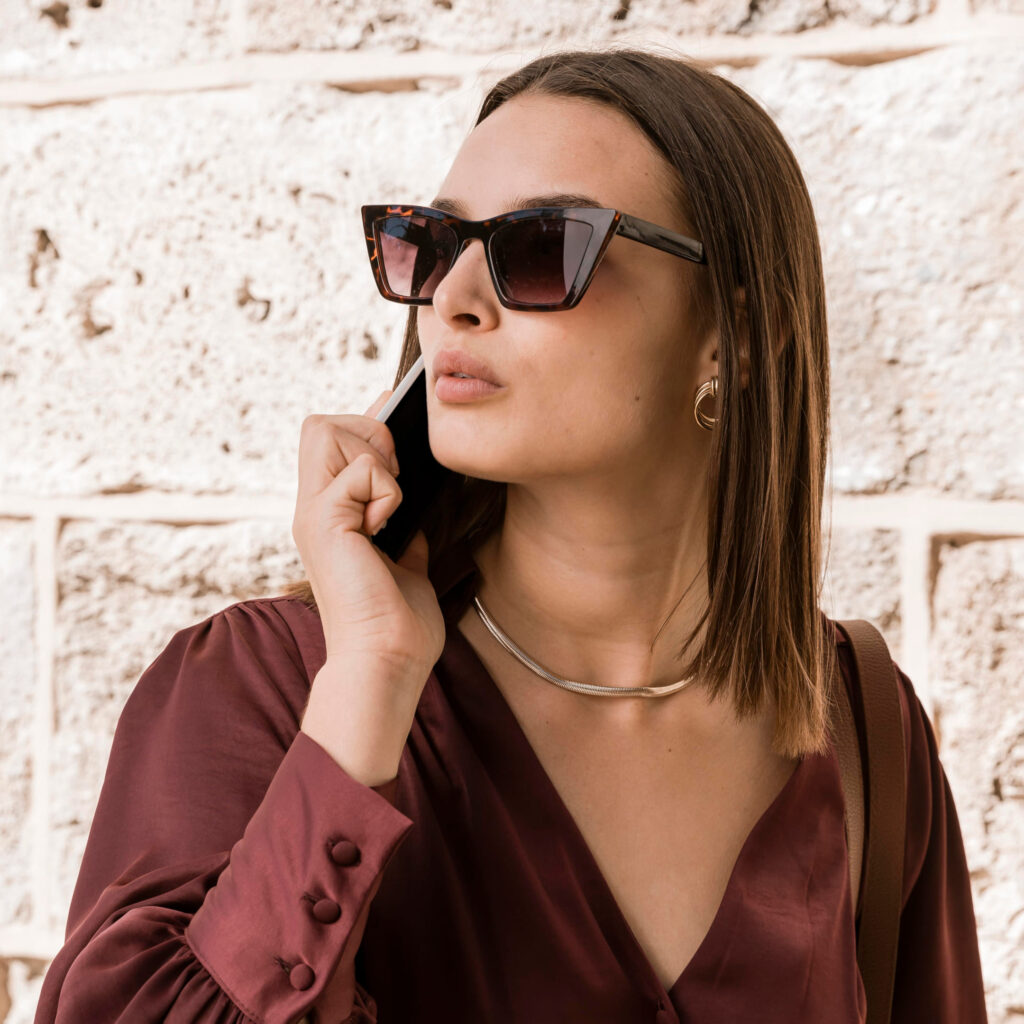
Minimalist accessories add subtle details to outfits without detracting from overall elegance. In this section, we’ll discuss choosing minimalist accessories and incorporating them into your style.
Choosing Minimalist Accessories
Quality over quantity: Invest in versatile, high-quality accessories.
Timeless designs: Opt for classic accessories that go beyond trends.
Versatility: Select accessories wearable with multiple outfits and styles.
Subtle details: Look for understated yet interesting details.
Incorporating Minimalist Fashion Styles
Less is more: Choose a few selected accessories to complement outfits.
Balance and proportion: Maintain harmony between accessories and outfit.
Color coordination: Stick to a cohesive color palette for accessories.
Layering: Layer accessories, like stacking bracelets or necklaces, to add depth without overwhelming.
For a practical example of applying these principles, refer to our guide on building a timeless minimalist wardrobe using 30 pieces.
Minimalist Outfit Ideas: Work To Weekend
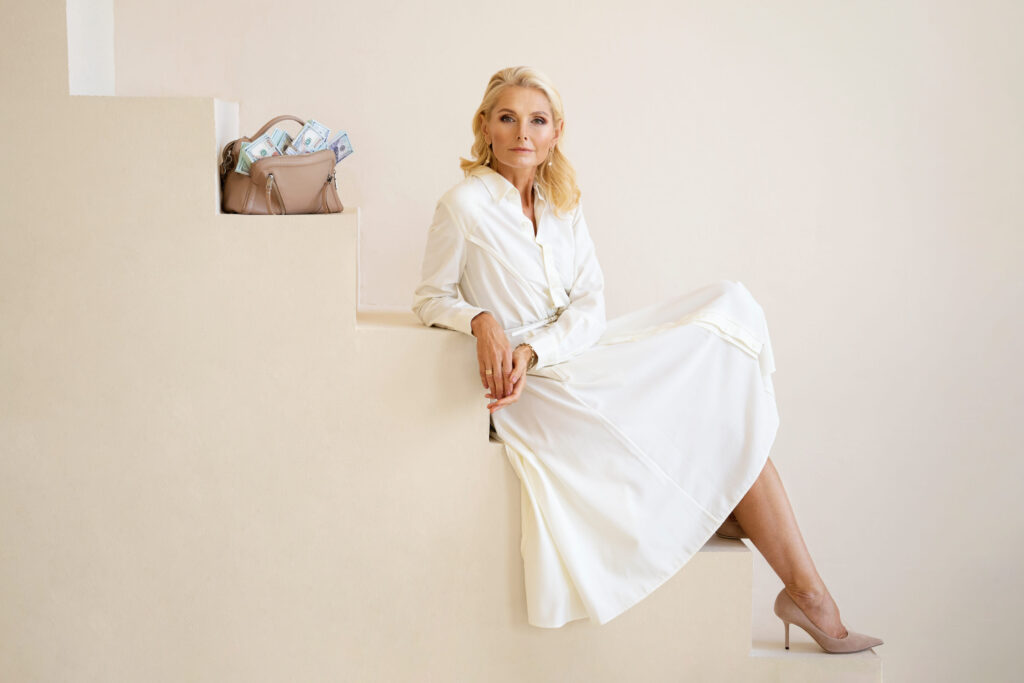
One of the benefits of embracing minimalist fashion is its versatility, as it allows you to create outfits suitable for various occasions and lifestyles, including street style looks.
For a polished yet versatile option, consider a tie front blouse. It pairs effortlessly with trousers for work or jeans for the weekend.
By curating a collection of essential pieces, you can easily transition from work to weekend while maintaining a polished and effortless appearance.
In this section, we’ll explore minimalist outfit ideas for the workplace and casual settings.
Minimalist Outfits for the Workplace
Tailored suit: Pair a neutral-colored suit with a simple blouse or turtleneck.
Pencil skirt and blouse: Combine a fitted pencil skirt with a classic button-up blouse.
Wide-leg trousers and blazer: Pair wide-leg trousers with a coordinating blazer.
Shift dress: Wear a knee-length shift dress accessorized with subtle jewelry and pumps.
Casual Minimalist Outfit Ideas
Jeans and a white tee: Pair well-fitted jeans with a classic white t-shirt, a versatile piece that can be dressed up or down, and accessories.
Sweater and midi skirt: Combine an oversized sweater with a midi skirt in neutral colors.
Jumpsuit: Style a solid-colored or subtly patterned jumpsuit with minimal accessories.
Wide-leg pants and a simple top: Pair wide-leg pants with a fitted top in neutral colors.
Women's Minimalist Fashion: Essentials & Styling Tips
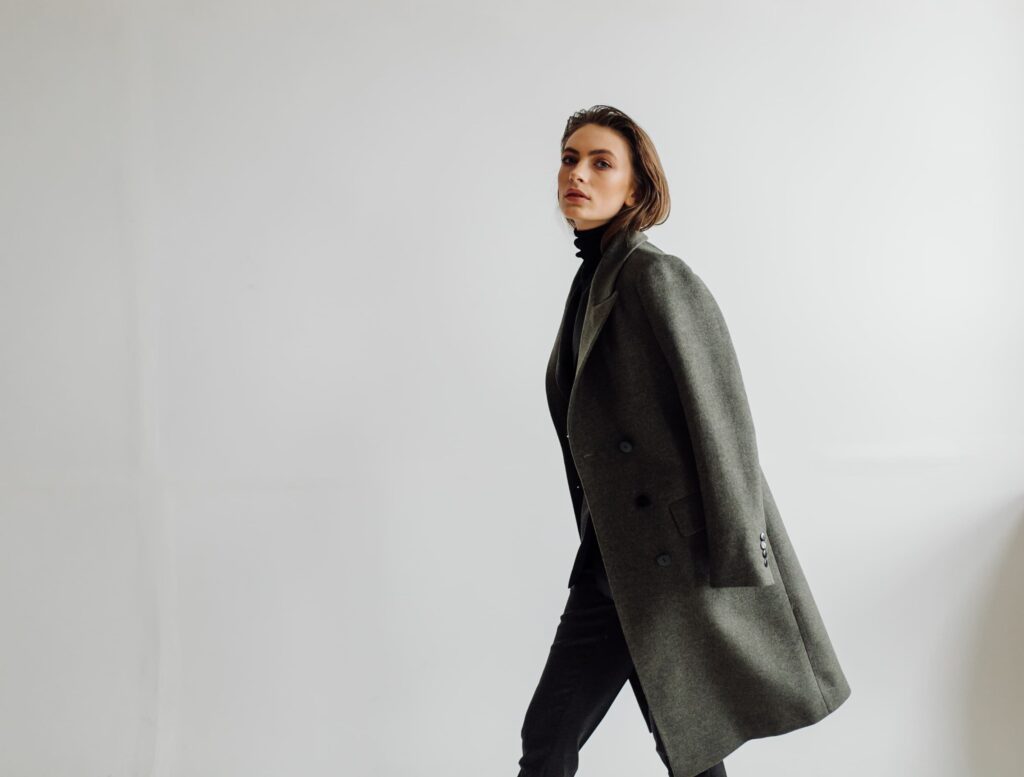
Minimalist fashion offers modern women a versatile, timeless, and elegant wardrobe. By curating essential pieces and employing styling techniques, you can create a variety of minimalist outfits for various occasions and lifestyles, especially as we transition into autumn.
For a deeper dive into this season’s elegance, check out Mastering Fall Minimalist Fashion: The Ultimate Guide to Autumn Elegance.
We’ll explore minimalist fashion essentials and styling tips for chic ensembles.
Essentials
Basic tees: High-quality, well-fitted neutral-colored t-shirts.
Button-up blouse: Neutral-colored timeless blouse for versatile styling.
Tailored blazer: Neutral-shade, well-fitted blazer for sophistication.
High-quality jeans and boots: Well-fitted, timeless styles like straight-leg or skinny jeans paired with classic boots in dark washes.
Simple dresses: Neutral-colored, well-fitted dresses in timeless silhouettes.
Classic outerwear: Investment pieces like trench coats or wool coats.
Styling Tips
Focus on fit: Ensure clothing fits well and flatters your body shape.
Embrace monochromatic looks: Experiment with varying shades of the same color.
Layer strategically: Add depth to outfits with layering, such as a base layer and a cardigan, blazer, or coat.
Accessorize minimally: Choose a few high-quality items and avoid over-accessorizing.
Mix and match: Combine essential pieces to create new and interesting combinations for various occasions.
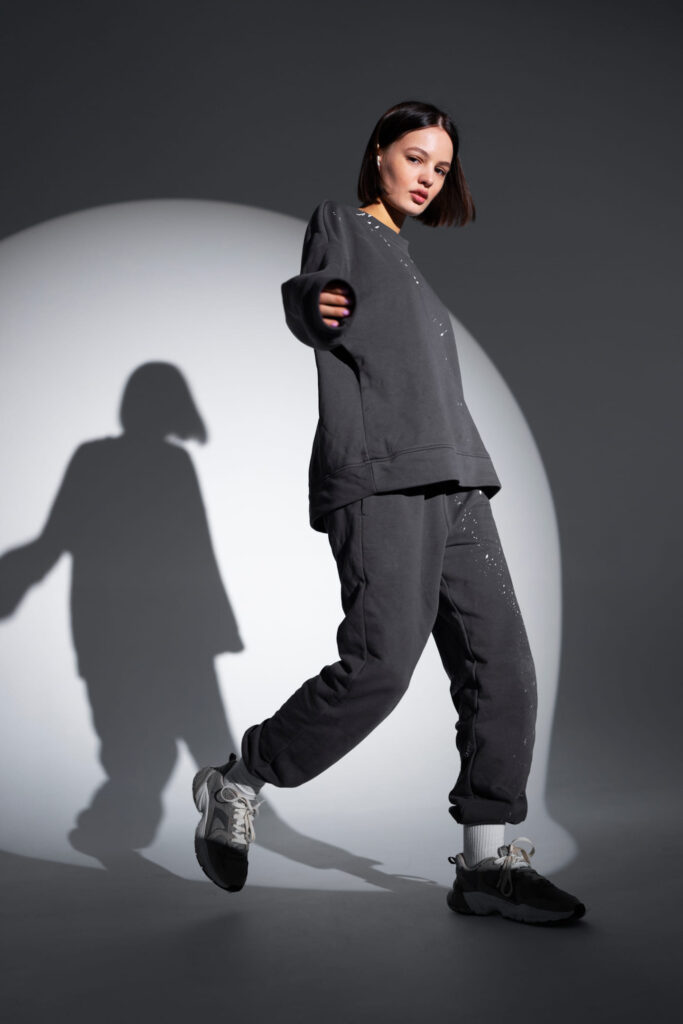
A well-coordinated color palette is crucial for cohesive and visually appealing minimalist outfits. Select a simple, versatile color scheme and use strategic color coordination techniques to create harmonious ensembles that exemplify the minimalist aesthetic.
In this section, we’ll discuss how to select a minimalist color palette and share techniques for color coordination in minimalist clothing.
Selecting a Minimalist Color Palette
Focus on neutrals: Base your wardrobe on neutral shades (black, white, gray, beige, navy).
Incorporate subtle colors: Add variety with soft pastels, earth tones, and desaturated hues.
Limit bold colors and patterns: Choose a few statement pieces that complement your color scheme.
Color Coordination Techniques
Monochromatic outfits: Create cohesive looks using varying shades of the same color.
Color blocking: Pair two or more solid colors for striking contrast, using a limited palette and simple garments.
Analogous colors: Pair adjacent colors on the color wheel for a harmonious outfit.
Balance and proportion: Consider color balance and proportion when coordinating your outfit.
Minimalism in Fashion: Evolution & Future Trends
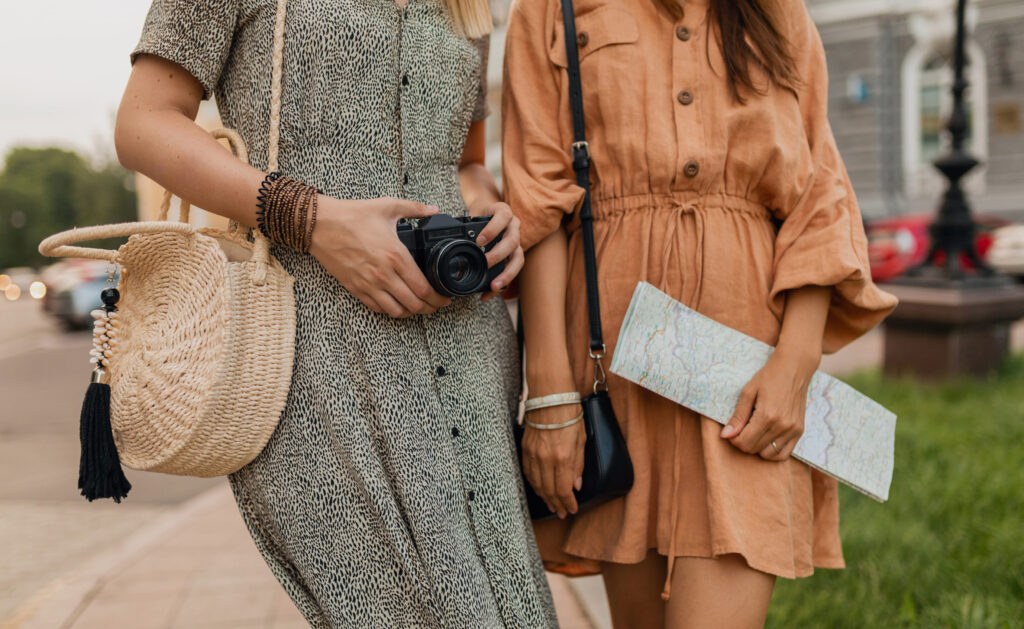
Minimalism in fashion has taken many forms over time, influenced by various art, design, and cultural movements, as well as the changing needs and values of society. In this section, we’ll explore the history of minimalism in fashion and discuss predictions for the future of minimalist clothing.
Understanding the origin of the term ‘minimalism‘ itself is crucial in grasping its impact on fashion. The word ‘minimalism’ emerges from the art world, specifically from the 1960s Minimal Art movement. It emphasized simplicity, purity, and a reductionist philosophy, all characteristics which profoundly influence minimalist fashion today.
History
Early influences: Modernist art movement and Bauhaus school emphasized simplicity and functionality.
Post-WWII fashion: Designers like Coco Chanel and Audrey Hepburn promoted pared-down, elegant styles.
1990s resurgence: Designers such as Jil Sander, Helmut Lang, and Calvin Klein created simple, unadorned designs and neutral palettes.
Future Predictions
Continued focus on sustainability: Minimalist brands will emphasize environmentally friendly materials and processes.
Increased emphasis on versatility: Minimalist clothing brands prioritize adaptability and multi-functional designs.
Personalization and customization: Minimalist brands may offer made-to-measure clothing and custom options.
Technological advancements: Future minimalism may incorporate innovative materials and construction techniques for enhanced functionality and longevity.
Minimalist Fashion: Textile & Texture Selection
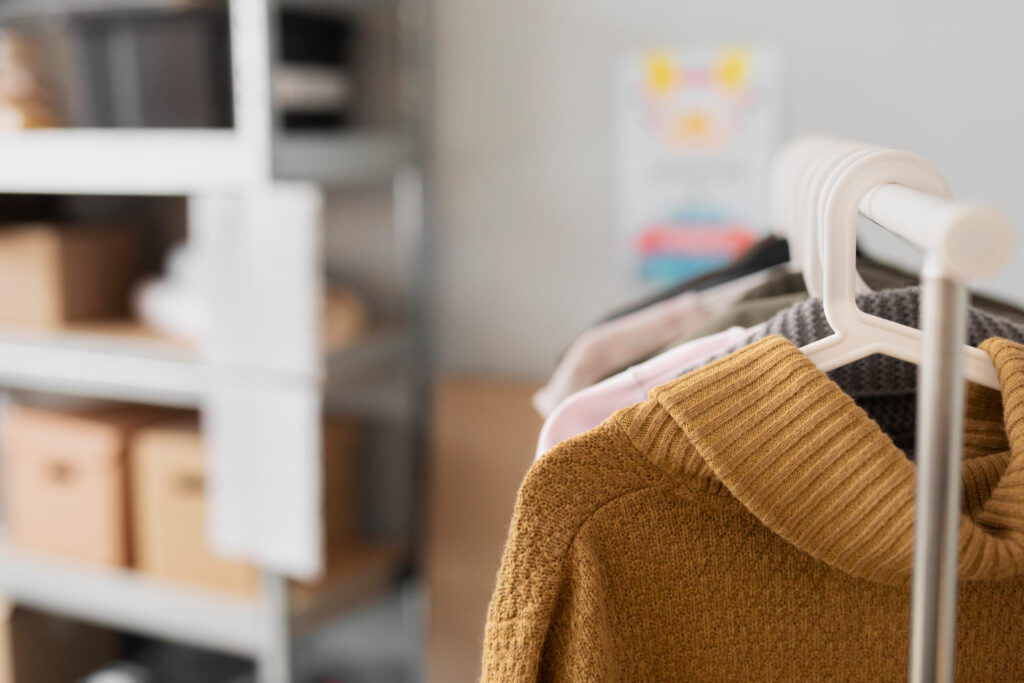
Choosing the right fabrics is crucial for achieving a minimalist wardrobe that is both aesthetically pleasing and functional. High-quality, versatile textiles not only contribute to the overall aesthetic of your outfits, but also ensure their longevity and comfort.
In this section, we’ll discuss the importance of fabric choice in minimal style fashion and provide guidance on selecting the best textiles for every single item in your minimalist wardrobe.
Importance of Fabric Choice in Minimal Style Fashion
Comfort and functionality: Enhance clothing comfort and practicality.
Durability: High-quality fabrics last longer, supporting quality over quantity.
Aesthetic appeal: Texture and appearance influence minimalist outfit aesthetics.
Selecting the Best Textiles for Your Minimalist Wardrobe
Natural fibers: Choose cotton, linen, wool, and silk for breathability, durability, and eco-friendliness.
Blends and synthetics: Consider blended or synthetic fabrics for specific purposes, like cotton-polyester blends or performance fabrics.
Seasonal considerations: Opt for season-appropriate fabrics, such as linen for summer and wool for winter.
Texture and drape: Focus on smooth, refined materials with a flattering drape for clean lines and simple silhouettes.
Decluttering & Maintaining A Minimalist Capsule Wardrobe
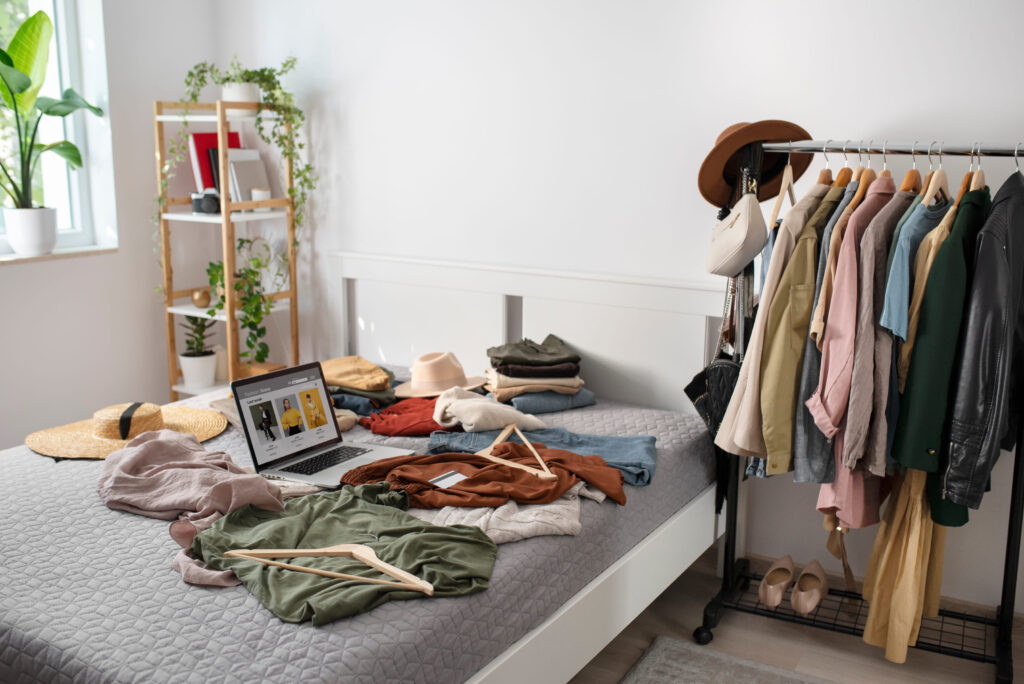
Embracing a minimalist approach involves not only curating a collection of essential, versatile clothing items, but also decluttering and maintaining your wardrobe to ensure it remains a reflection of your personal style and values.
In this section, we’ll share tips for decluttering your wardrobe and maintaining a minimalist wardrobe over time.
Tips for Decluttering Your Capsule wardrobe
Assess your wardrobe: Minimalist fashion reduces more stuff, emphasizing quality and versatility. Find your magic number of essential items by assessing wardrobe condition and fit.
Define personal style: Identify essential components to make informed decisions.
Use “one-in, one-out” rule: Maintain a manageable collection.
Donate, sell, or recycle: Responsibly dispose of unwanted items.
Organize remaining items: Use closet organizers for a clean, accessible space.
Maintaining a Minimalist Wardrobe Over Time
Shop mindfully: Prioritize quality and versatility that align with personal style.
Regularly review wardrobe: Assess items to maintain a current, functional collection.
Invest in clothing care: Follow laundering instructions, repair damages, and store properly.
Embrace versatility: Incorporate items that transition between occasions, seasons, and trends.
Conclusion
Minimalist fashion is a powerful and meaningful way to express your personal style while being mindful of the environment and your wardrobe’s impact.
By investing in high-quality essentials, focusing on versatility, and adopting sustainable practices, you can enjoy the benefits of a simplified wardrobe that seamlessly transitions between occasions and lifestyles, making every piece feel essential like the perfect word in a sentence.
So, go ahead and embrace minimalist fashion as a stylish, eco-friendly, and clutter-free way to redefine your relationship with clothing.

